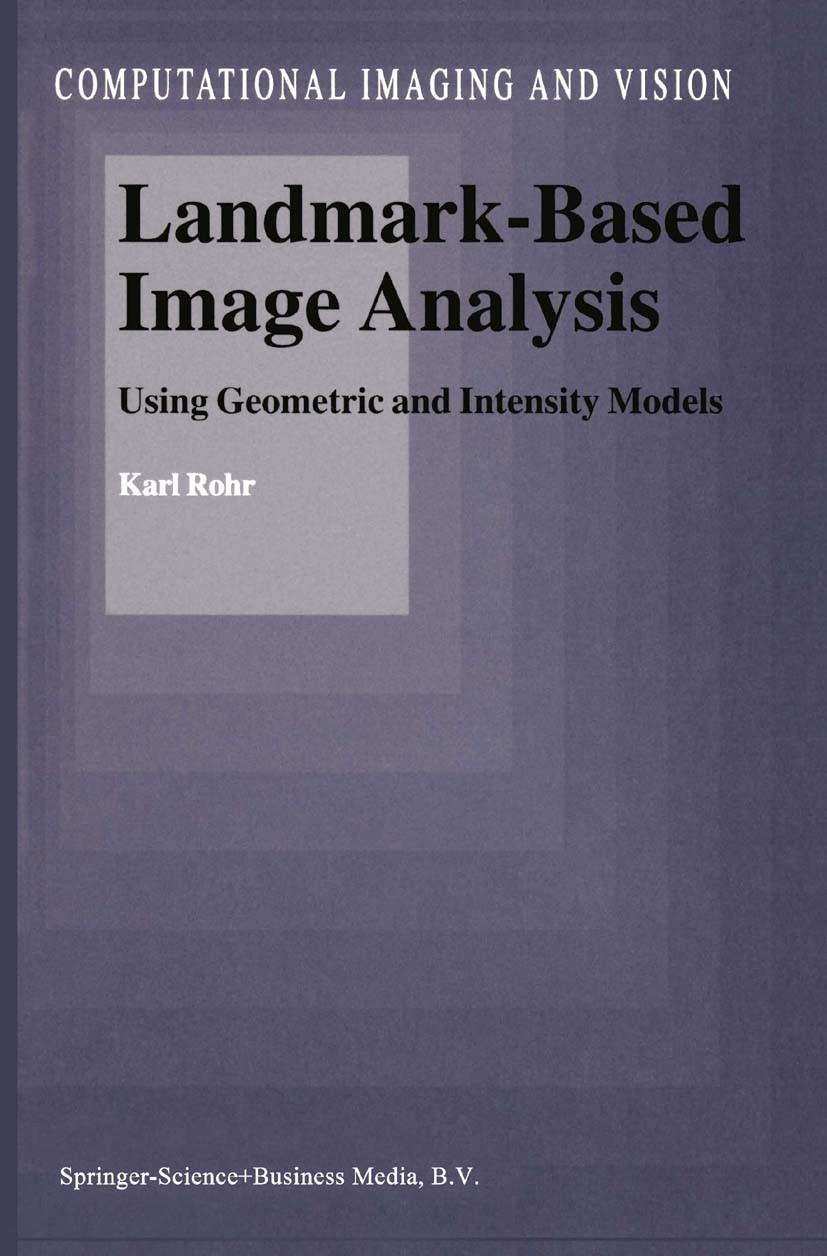| 書(shū)目名稱(chēng) | Landmark-Based Image Analysis | | 副標(biāo)題 | Using Geometric and | | 編輯 | Karl Rohr | | 視頻video | http://file.papertrans.cn/581/580646/580646.mp4 | | 叢書(shū)名稱(chēng) | Computational Imaging and Vision | | 圖書(shū)封面 |  | | 描述 | Landmarks are preferred image features for a variety of computer vision tasks such as image mensuration, registration, camera calibration, motion analysis, 3D scene reconstruction, and object recognition. Main advantages of using landmarks are robustness w. r. t. lightning conditions and other radiometric vari- ations as well as the ability to cope with large displacements in registration or motion analysis tasks. Also, landmark-based approaches are in general com- putationally efficient, particularly when using point landmarks. Note, that the term landmark comprises both artificial and natural landmarks. Examples are comers or other characteristic points in video images, ground control points in aerial images, anatomical landmarks in medical images, prominent facial points used for biometric verification, markers at human joints used for motion capture in virtual reality applications, or in- and outdoor landmarks used for autonomous navigation of robots. This book covers the extraction oflandmarks from images as well as the use of these features for elastic image registration. Our emphasis is onmodel-based approaches, i. e. on the use of explicitly represented knowledge in image a | | 出版日期 | Book 2001 | | 關(guān)鍵詞 | artificial intelligence; computer; computer graphics; computer vision; detection; image analysis; image re | | 版次 | 1 | | doi | https://doi.org/10.1007/978-94-015-9787-6 | | isbn_softcover | 978-90-481-5630-6 | | isbn_ebook | 978-94-015-9787-6Series ISSN 1381-6446 | | issn_series | 1381-6446 | | copyright | Springer Science+Business Media Dordrecht 2001 |
The information of publication is updating

|
|
 |Archiver|手機(jī)版|小黑屋|
派博傳思國(guó)際
( 京公網(wǎng)安備110108008328)
GMT+8, 2025-10-7 20:45
|Archiver|手機(jī)版|小黑屋|
派博傳思國(guó)際
( 京公網(wǎng)安備110108008328)
GMT+8, 2025-10-7 20:45


